Must-read blogs
- Casinos Not On Gamstop
- Casino Con Bonus Di Benvenuto
- UK Online Casinos Not On Gamstop
- Migliori Bookmakers Non Aams
- Gambling Sites Not On Gamstop
- Non Gamstop Casinos UK
- Non Gamstop Casino UK
- Slots Not On Gamstop
- Best Non Gamstop Casinos
- Sites Not On Gamstop
- Non Gamstop Casino
- Sites Not On Gamstop
- Slots Not On Gamstop
- UK Casino Not On Gamstop
- Casino Non Aams
- Best UK Online Casino Sites
- Sites Not On Gamstop
- Casino En Ligne Fiable
- Non Gamstop Casino UK
- Non Gamstop Casino
- Non Gamstop Casinos
- Non Gamstop Casino
- Migliori Casino Online Italiani
- Best Betting Sites Not On Gamstop
- Meilleur Casino Crypto
- Sites De Paris Sportifs Belgique
- Casino En Ligne Fiable
- найкращі крипто казино
- Meilleur Casino Sans Kyc
- Casino Cresus
- Bonus Gratuit Sans Dépôt
- Casino Senza KYC
- Meilleur Casino En Ligne
- Casino En Ligne Français
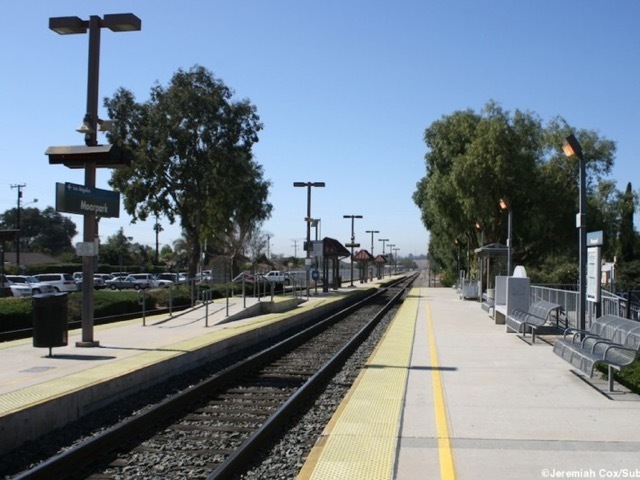 Well, the 2016 High Speed Rail unlock has been postponed to 2018 or 2020.
Well, the 2016 High Speed Rail unlock has been postponed to 2018 or 2020.
When transportation policy at the Federal level is grabbed with both hands by the Oil and Gas death lobby, we have to turn to the state level. Now, in Ohio, it might not look like that offers a prospect any better ... but unlike 2010 and 2014, in 2018 the Gubernatorial cycle will be in an election cycle with a President in the Republican party ... which leads to a predictable midterm backlash.
That midterm backlash tends to be strongest in the first midterm ... and it seems likely to be even stronger, given the character of the Republican who happens to occupy 1600 Pennsylvania Avenue.
And so bringing the focus of sustainable transportation policy from the Federal level to the State and Local level was in my head when I read: Oxford commits to funds, support for Amtrak stop. The City of Oxford, Ohio, the college town that hosts Miami University (not, of course, "the University of Miami") has committed $350,000 toward the construction of an Amtrak station for the Cardinal that runs through town three times a week to Chicago and DC/NYC. This matches the $350,000 committed by Miami University.
More about building up The Cardinal as a Knowledge Corridor, below the fold.
But first, a Sunday Train reminder ...
Given the long hiatus in the Sunday while I have been busy here in Beijing with full time teaching as well as supplementary teaching on the weekend, I ought to repeat the Sunday Train rules that any topic in sustainable energy and sustainable transport is "on topic" ... so no need to include "OT" in a comment that is not directly about this week's essay, simply put in "Transport:" or "Energy:" and away you go.
Growing Hope for an Amtrak Station for Miami University and Oxford, Ohio
Here are two key points from the article linked to above the fold:
Rail advocates in the region are hopeful the Oxford project will help propel forward plans to bring daily rail service between Cincinnati and Chicago. In addition to Miami University, Purdue University in West Lafayette also sits along the Cardinal Line, not to mention all the metro universities in Chicago, Indianapolis, and here in Cincinnati.
A seven-member Joint Miami-Oxford Amtrak Committee found it would cost between $1 million and $1.3 million to build the kind of stop Amtrak might use in Oxford: a 300-foot train platform, an open-air canopy or shelter and access sidewalks.
So $700,000 means that about 50%-70% of the funds needed for a station are already committed. Given a reasonable Federal or a reasonable State government transportation policy, it ought to be straightforward to gain capital funding for the balance.
Now, this is just three trips to Chicago an three trips to DC/NYC per week ... but Oxford, Ohio does not have a wealth of transportation options, and a substantial share of the Miami University student body is from the Greater Chicago area. While the trip to Chicago is substantially slower than driving, it is also an overnight trip, leaving for Chicago around 2:20 am EST to arrive about 10 am CST, and leaving for Oxford at 5:45 pm CST to arrive about 2:40 am EST. So in either direction, but especially in the trip to Chicago, there is an opportunity for many travelers to spend a substantial portion of the trip asleep.
But the piece also notes that this is part of the effort to gain a daily service between Cincinnati and Chicago ... so what is up with that?
Building the Cardinal Knowledge Corridor
Sadly, a reasonable Federal or State government transportation policy is not something that can be assumed: it is something that must be won at the ballot box. While the promise of three trips to Chicago and three trips to DC/NYC for Oxford, Ohio is appealing for Oxford, Ohio ... on its own, it doesn't make a high impact promise in a race for statewide office.
But ... what was that about gaining daily service between Cincinnati and Chicago? Sunday Train has talked about the Amtrak Cardinal before, including almost seven years ago, in March of 2010, in Sunday Train: Rescuing the Cardinal from Demise, and then covering the Amtrak "PRIIA" report on the Cardinal route (pdf) a little less than five years ago in Sunday Train: Putting Steel into the Amtrak Long Distance Backbone.
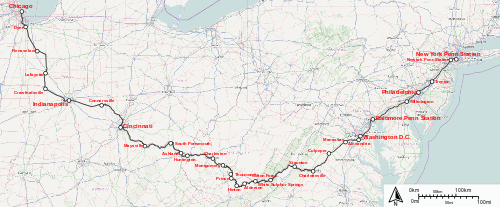
The basic proposal in the Amtrak "PRIIA" report on the Cardinal focused on the fundamental inefficiency of the three day a week Cardinal service, supplemented by a four day a week Hoosier State service to ensure daily service between Indianapolis and Chicago. This required three train sets and two diesel locomotives ... two train sets for the Cardinal, with one locomotive (because the Cardinal uses an electric locomotive between DC and NYC), and one train set and locomotive for the Hoosier State. Meanwhile, two locomotives and three train sets would allow the Cardinal to provide daily service.
The latest transportation authorization shut down Federal subsidies for Amtrak routes of 750 miles or less. This meant that if Indiana wanted to maintain the Hoosier State, it needed to find a way to cover the costs itself. With a "dark red" State Legislature and radical reactionary theocratic Governor (now Vice President), state subsidy for an Amtrak service was opposed on ideological grounds. However, if the service was not operated by Amtrak, the service would lose the access to the freight rail corridors protected by federal legislative ... and so Indiana cobbled together a system in which the Hoosier State was hauled by an Amtrak locomotive, operated by Amtrak engineers and tickets sold by Amtrak, but the train set was provided and passenger service staff employed by a private tourist train operator.
In terms of the 2010 status quo, an estimated additional $2.1m in operating subsidy would have allowed the Cardinal to be expanded from 3 days a week to daily service. One additional baggage, sleeper, diner, and coach car would be needed to be added to the Hoosier State to allow is to provide the overnight sleeper service provided by the Cardinal.
But the 2010 status quo is not the current status quo. With the subsidy for the Hoosier State abandoned, the increase in cost is $6.1m, rather than $2.1. Daily service would substantially increase efficiency, with the loss per passenger mile dropping from $0.39 to $0.29 and the farebox cost recovery increasing from 29% to 35%. On the 2010 PRIIA estimates, the operating cost recovery on the fares of the new passengers alone would be 61%.
Now, this allows for a daily connection for Miami University to Purdue, Indiana University, Marshall, and Universities in Greater Chicago such as the University of Chicago and Northwestern ... and a local shuttle bus from the University of Cincinnati to Cincinnati Station will link UC into that system. But the "Knowledge Corridor" opportunities offered by a Miami University - Oxford Station extend further than that.
The first obvious connection is the University of Dayton. According to Google Maps, the driving time from Dayton to Oxford is one hour. Here the late-night nature of the service offers an advantage, as it should be possible to rent the use of a public transport vehicle for a shuttle from Dayton to Oxford Station for the 2:20 am train to Chicago, and then wait until the arrival of the 2:40 am train from Chicago. Indeed, passengers traveling in the opposite direction to and from DC/NYC are also served by the same shuttle ... though with an extra 20 minute wait on both ends.
But the big connection would be an Amtrak Thruway bus, subsidized by the State of Ohio, connecting Ohio State University to the Cardinal on both the DC/NYC side and the Chicago side. The eastern connection can also include Ohio University in scenic Athens, Ohio.
The westbound Cardinal reaches Charleston, WV, at 8:25pm. According to Google, Huntington Station to downtown Columbus via Athens is 2 hrs, 36 minutes. Rounding up to allow time for the stop in Athens and to stop at the Columbus Convention Center as well as OSU campus makes it 3 hours, so figure it in Columbus at 11:25pm.
Now, as note, the westbound Cardinal would reach Oxford Station at about 2:20 am. According to Google Maps, the driving time from Columbus to Oxford via Interstate 70 and US127 is 2 hours, so the same Thruways bus can dwell at OSU Campus until just before midnight and then head out to Oxford Station to deliver passengers to Oxford station before the Chicago bound train.
Now, as noted, the eastbound Cardinal would arrive at Oxford at about 2:40 am, so at around 5am the Thruway would be at OSU campus, and shortly after that can leave Columbus for Charleston WV via Athens, to catch the eastbound Cardinal at Charleston at 8:20 am.
Bringing the Cardinal to Columbus
Now, while this is a plan that could be implemented within a single Gubernatorial term ... and it does have better "reach" than just a station for Miami University ... it is still lacking as far as a core vision and message.
But looking back over my previous Sunday Train: Rescuing the Cardinal from Demise from seven years ago, it may be possible to shift that plan to make the seven day a week Cardinal into something of greater interest beyond Southwest Ohio and Southwest Ohio.
One central problem with the Cardinal is that its bipolar identity. On the eastern side, it is a corridor connecting Northern and Eastern Kentucky, West Virginia and Western Virginia with DC and NYC. On the eastern side, it is a corridor connecting West Virginia, Eastern and Northern Kentucky, Cincinnati and Indiana to Chicago. As of FY09, there was not a single trip-pair that included NYC. By contrast, 33% of Cardinal ridership were provided by five trip-pairs involving Chicago: CHI-Indianapolis (12%), CHI-Lafayette (9%), CHI-Cincinnati (6%), CHI-Charlottesville (3%) and CHI-DC (3%). The only other trip-pairs with more than 2% of total ridership involved DC: the above CHI-DC (3%), Cincinnati-DC (3%) and Charlottesville-DC (3%).
However, this only accounts for 38% of ridership, with 62% of ridership coming from trip pairs that account for less than 2% of ridership. As the Sunday Train has noted repeatedly, an Amtrak station in a small town in a rural area is far more important to that community than that individual community is important to Amtrak. There are a large number of common carrier options for Chicago to Cincinnati or Cincinnati to DC or NYC, by bus as well as by plane, but for many small towns in rural areas with an Amtrak station, their options are more limited. If one lives in a small town in southern West Virginia, an air connection to a hub airport is either infrequent an expensive (despite its subsidy), or else non-existent. Even getting to a Greyhound stop may require a long drive to the interstate highway fast food restaurant where the bus stops for a meal and cigarette break.
For these smaller markets, trips to NYC are more common, and loss of the connection to NYC is more problematic. Yet that is a waste of time as far as the major markets go. And it is also an inefficient use of the Northeast Corridor, since the Southbound NYC/DC Cardinal only allows through passengers to board while the Northbound DC/NYC Cardinal does not accept boarding passengers. So there are empty seats hauled by the Cardinal on the NEC in both directions, which represent wasted capacity for passengers between points on the Northeast Corridor.
The problems with terminating the Cardinal at Washington DC involve both cost of travel an convenience. If the trip consists of a long distance trip terminating at DC, plus a Northeast Regional ticket to an NEC destination, that will cost more than taking a long distance trip through to a point on the NEC. And if the ticket involves a through connection at DC, and the Cardinal is delayed ... as it often will be, due to operating on rail corridors owned by freight rail companies ... there is the challenge of changing the Northeast Regional side of the ticket to another train, where one or more following NEC trains may be sold out, compounding the delay.
Neither of these are insurmountable obstacles. A block of seats on an Northeast Regional can be allocated to Cardinal passengers, buying tickets through to NYC at long distance rates ... coach passengers in coach, business class and sleeper passengers in business class ... with Amtrak automatically handing the release of the original Northeast Regional seats and re-allocation to following Northeast Regional services in the event of a late arrival. Indeed, in negotiation with the State of Virginia, the newly available NEC capacity could be allocate to a train originating in Norfolk through Charlottesville, with the Cardinal passengers to points north of DC changing trains at Charlottesville rather than DC.
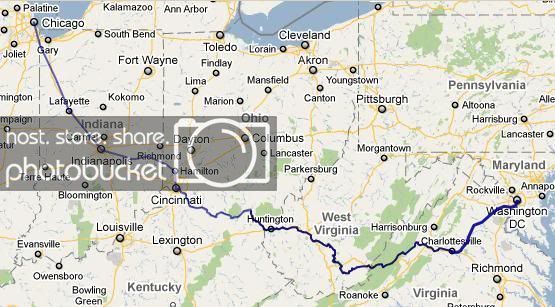
Once the Cardinal train set terminates at DC, it is ready to turn around and go back to Chicago. But even between DC and Chicago, the Cardinal is the long way around. Getting through Appalachia via Charleston, West By-God Virginia is not the direct route. The direct route is to go via Pittsburgh. On the current schedule, the Cardinal leaves DC at 11am, to arrive in Chicago 10 am Central Time, and leaves Chicago 5:45 pm Central Time to get to DC 6:19 the following day. So three trains are required, whether NYC is included or not.
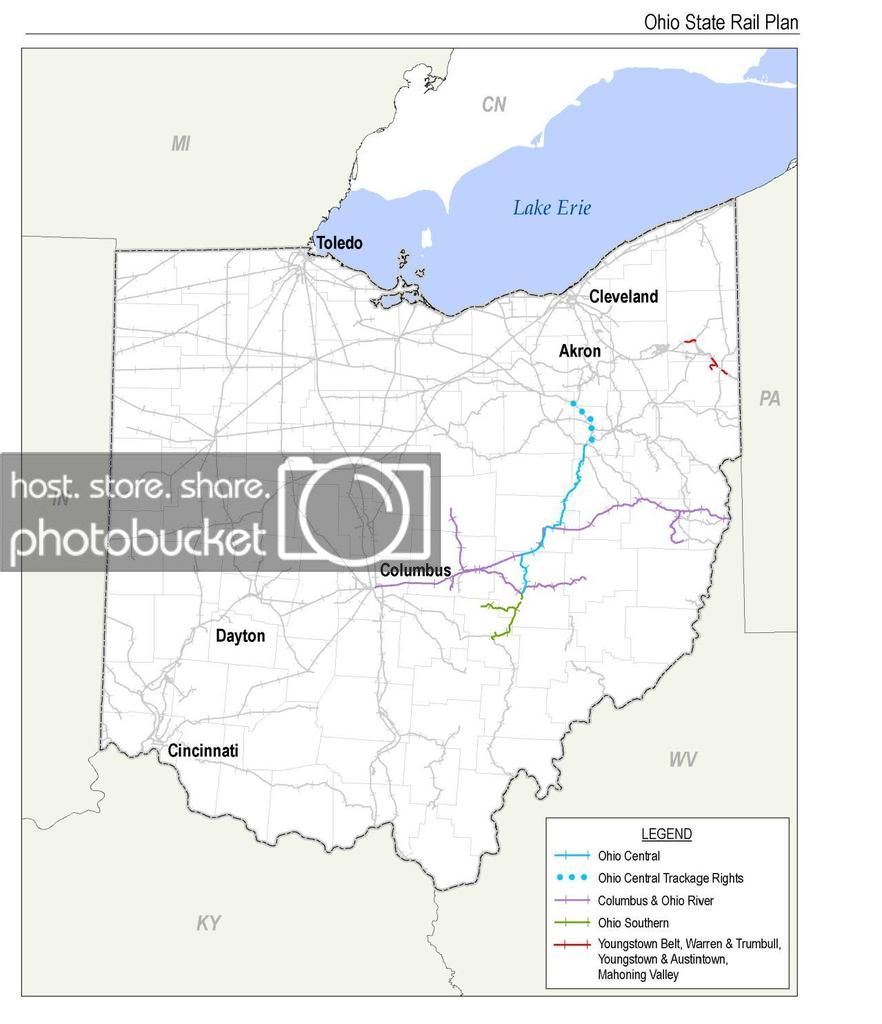 But Columbus is the largest urban area in the US without Amtrak long distance rail service at all, the second largest (after Phoenix, which has a Thruways bus connection) without direct Amtrak long distance rail service. And there is a rail corridor ... a lightly used rail corridor, operated by the Ohio Central short line ... that connects Columbus to the eastern state border, with rail connections from there across the West Virginia panhandle to Pittsburgh, about 40 miles away.
But Columbus is the largest urban area in the US without Amtrak long distance rail service at all, the second largest (after Phoenix, which has a Thruways bus connection) without direct Amtrak long distance rail service. And there is a rail corridor ... a lightly used rail corridor, operated by the Ohio Central short line ... that connects Columbus to the eastern state border, with rail connections from there across the West Virginia panhandle to Pittsburgh, about 40 miles away.
Now, suppose that from Columbus, you follow the proposed Columbus - Fort Wayne - Chicago Rapid Rail route through to Chicago. As I propose seven years ago ... but swap "Columbus" in for "Cleveland", with some adjustments to the timing:
Now, don’t think about the Cardinal route as a New York route, think about it as a Chicago route. Chicago to Indianapolis is covered. Chicago to Cincinnati through to DC is a much longer ride. And the best way to cut [effective] time out of the ride is to make it a sleeper service.
So leave Chicago at 10pm. The train runs through Indianapolis between 4am and 5am, then reaches Cincinnati at 7:45am. It gets to Charleston, WV about 12:30pm, starts passing through western Virgnia around 4:30pm, and hits Washington around 10:10pm.
OK, now, we have a train arriving in DC at about 10:10pm … why not make it a night train as well. I’ll have it continue around 11pm heading up toward Pittsburgh, along the Capital Corridor route. It gets to Pittsburgh about 7am, Cleveland about 10am, Toledo 12:30pm, and gets to Chicago about 4pm. That gives it six hours to get ready to start the loop all over again.
The key to the night train scheduling is to make sure that the reverse trip is a similar night train. So a second train runs the reverse route, leaving Chicago at about noon, getting to Cleveland about 7:15pm and Pittsburgh 10:40pm, then DC at 6:30 the next morning. Leave DC at 8:30 to arrive at Charleston WV 5:30pm, Cincinnati at 10:30pm, and Chicago at about 7:55 the next morning.
Now, this is not a service that can be added in a single Gubernatorial term. But a study can be completed and Environmental Impact Asssessments started in a single term. The target for the study is to identify the opportunities within or adjacent to Ohio state borders for cost-effective investment to allow the project to go ahead. A key part of this is improvement of rail corridors to allow the service to catch up time that it has lost elsewhere.
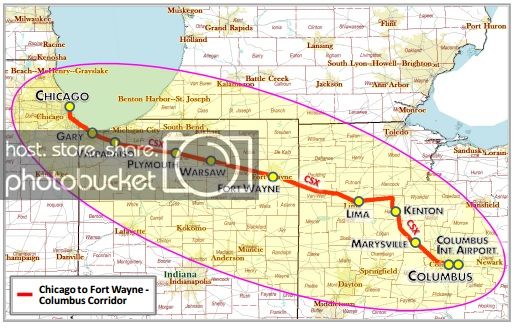 With direct Chicago rail service available at Columbus, the Thruway buses can be shifted to running from Athens to Charleston WV Station & Columbus Station, and a Dayton Thruway can run to Oxford Station and Columbus Station, providing bus connections to two daily services to Chicago and DC. And, if the timing of the Chicago service is substantially different from the Lakeshore and Capital Ltd trains through Toledo, a Thruway connection from Toledo and Bowling Green to the Lima, Ohio stop on the Columbus - Fort Wayne - Chicago corridor could also be provided.
With direct Chicago rail service available at Columbus, the Thruway buses can be shifted to running from Athens to Charleston WV Station & Columbus Station, and a Dayton Thruway can run to Oxford Station and Columbus Station, providing bus connections to two daily services to Chicago and DC. And, if the timing of the Chicago service is substantially different from the Lakeshore and Capital Ltd trains through Toledo, a Thruway connection from Toledo and Bowling Green to the Lima, Ohio stop on the Columbus - Fort Wayne - Chicago corridor could also be provided.
If established, then the long distance through train provides the platform for a series of incremental improvements of service. Additional service from Columbus to Pittsburgh may connect with the Pennsylvanian services between Pittsburgh and Philadelphia / NYC. Additional corridor services from Columbus to Chicago and from Cincinnati to Chicago may be contemplated.
Conclusions & Conversations
These are primarily conventional speed trains. So, unlike 110mph Rapid Rail passenger service between cities of the right size, the right distance apart, these will not be self-supporting from farebox revenues.
So the question of whether they can work hinges on whether they can persuade a sufficient number of voters that they are a worthwhile target for subsidy by the state government. Part of that depends on the political skill of the candidate pushing for it ... and that is well beyond my own particular area of expertise. so I will not focus on that. However, another part of that depends on interest group politics, and there are elements of interest group politics that do fall into my bailiwick.
Two elements of a successful Democratic run for statewide offices in Ohio in 2018 will be base turn-out and wedging some portion of Republican leaning votes. Now, the "Knowledge Corridor" concept is clearly aimed at some parts of the base Democratic vote, including both college students and residents of large cities.
However, there is no such thing as "flyover country" for long distance trains. The Northeast Indiana Passenger Rail Association Plan (pdf) for a Columbus to Chicago train calls for stations at local stations at Marysville and Kenton, Ohio, as well as Express stations in Columbus International Airport, Columbus Convention Center and Lima, Ohio. Adding the Columbus / Pittsburgh stations from the expanded Ohio Hub proposal would include Newark, Coshocton, and Steubenville, as well as stops at Pittsburgh as well as Carnegie in Pennsylvania.
For this to have traction as a wedge, then some of the residents of these towns and their surrounding rural areas have to be willing to listen to the proposal. In the face of a popular Republican incumbent, and with a locally popular Republican or locally unpopular Democrat in the White House, it's easy enough for people living in predominantly Republican areas to just ignore the policies proposed by a Democratic candidate, and instead choose to believe whatever outlandish lies are being peddled on their Facebook feed by their curated friend list.
But ... well, I reckon that in 2018, the Republican party is going to be "on the nose" (as they say in Oz). It likely won't be a majority, in these areas, but there will be some voters looking for an excuse to cast a vote that punishes the Republicans for whatever scandalous things Trump and the House Republicans are up to. In that context, this could be part of the wedge that succeeds in getting them to demonstrate their "independent" status and prove to the Republicans that their votes cannot be taken for granted, by crossing over to the Democratic side of the ballot.
I expect a suitably skilled politician can leverage that. Their Republican opponent will throw the cost of the plan in their face at a debate, and they may answer, "over the last third of a century under an almost unbroken series of Republican governors, spending on prisons has gone from $X per Buckeye to $Y, and yet you object to spending less than $10 per Buckeye so Columbus, Marysville, Newark, Kenton, Coshocton, Lima, Steubenville and Oxford can have a train station with daily service to Chicago and the East Coast."
So, what do you think?